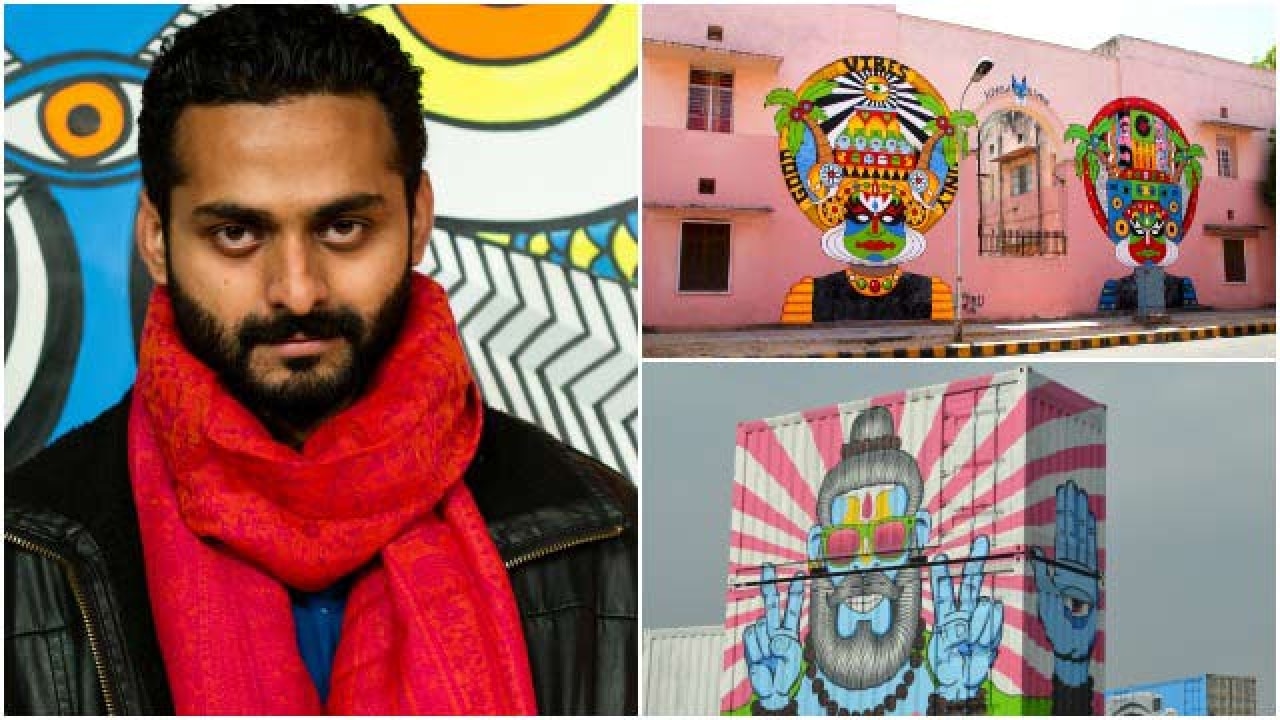
For years, the only colours visible on drab, lifeless buildings in Delhi were paan and pee stains. But thanks to up and coming graffiti artists, the concrete structures have gradually started turning into things of beauty.
One such do-gooder who can be credited with beautifying the buildings in the Capital is Harsh Raman Singh Paul, a self-confessed passionate storyteller, currently working as a designer and an artist. His works adorn locations such as Agrasen Ki Baoli, Lodhi Art District, and Shahpur Jat. In a candid tête-à-tête with DNA, Paul opens up about art, social issues close to his heart, and his inspirations.
Graffiti is an excellent medium to bring the focus on social and economic issues that might be overlooked by the government. Graffiti is truly democratic in nature – it is art for the people, by the people, and talks about what it means to live in today’s society. A painted wall gets a lot of public exposure and is seen by thousands of people everyday. With collaborative projects such as Walls of Women (WOW) and Missing Girls, we have been able to draw international media attention to important issues concerning women. With projects such as Education Is Not A Crime, we have been able to talk about the injustice of denying children the right to education. In a country with high economic disparity, street art acts as a social equaliser by placing all economic classes on the same pedestal.
Yes, I did start off solo. Street art gave me a sense of freedom. I had a lot to talk about that I couldn’t really express in my professional work as a graphic designer and film-maker. Graffiti allowed me to execute my ideas without restrictions. A lot of artists who have been part of our WOW project came onboard because they could connect with our vision. At times, we also accept volunteers, who get in touch with us via social media. Children are a very important part of what I do. I just love their curious nature and creative spirit. The Kathakali wall in Lodhi district was painted with the help of local street kids.
I firmly believe that we are not mere products of our surroundings. In fact, our surroundings are a product of our actions. As a sensible human being, I want to bring about a positive change in my surroundings so that society can improve for the collective good. What better place to start than the city where I was born and raised? Delhi is my hometown, my mother, my child, and also my canvas.
I want to talk about the intangible happiness that can’t be purchased. It is there in all of us but we get so distracted by our external environments that we forget to look deep inside us. I want to change society’s focus from instant gratification to internal satisfaction. And sometimes, I just want to unleash my emotions and express how I feel.
Colours play a very important role in my art and the process of selection is intuitive. Colour has a lot of meaning and power attached to it. I just seem to have an innate understanding of this. The source of this is a mystery to me and I like to keep it that way. It’s a random process that makes my work unpredictable and exciting to me.
I find inspiration in my everyday interactions with people around me. These interactions have made me sensitive to desires and despair of the common man. For me, street art has been a way of giving power back to the individual. It reinforces the fact that we all have the power to change the society we live in.